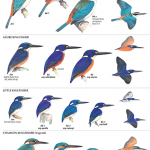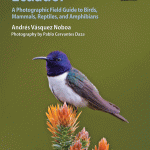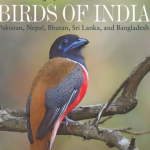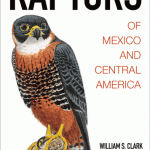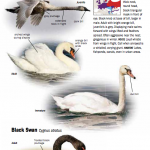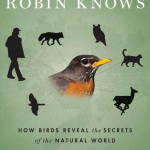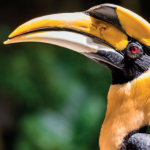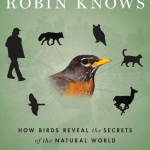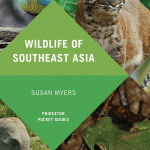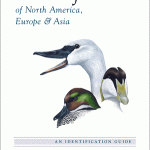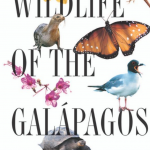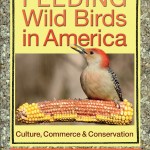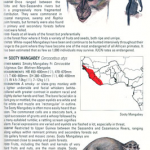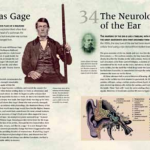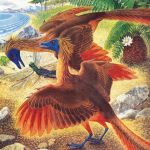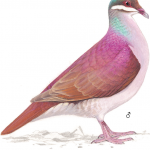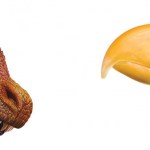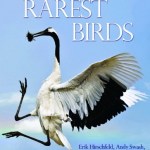Books-Birds
There are close to just under 900 species of bird in Australia, and The Australian Bird Guide by Peter Menkhorst, Danny Rogers, Rohan Clarke, Jeff Davies, Peter Marsack, and Kim Franklin covers just over 900 of them. Where do the extras come from? Sea birds in the nearby oceans, I think.
This is an excellent bird book that all Australian birders simply need to have. Holiday season is just around the corner. Get one of these for your favoriate Australian!
This is not exactly a pocket guide. It is more of a car guide, and you better have a big glove box. The 6.8 x 9.7 inch format is hefty…
Wildlife of Ecuador: A Photographic Field Guide to Birds, Mammals, Reptiles, and Amphibians by naturalist Andrés Vásquez Noboa, witih photography byablo Cervantes Daza, covers mainland Ecuador (but by "mainland" we also mean ocean mammals). Focusing only on non-piscine verts, you will need to go elsewhere for your inverts and plants and such. But you get the point. This book covers most of what you are looking for when you are out in the wild looking for animals.
This is not a comprehensive guide, but covers the most frequently seen animals, totaling to 350 distributed across over 400…
A Photographic Field Guide to the Birds of India, Pakistan, Nepal, Bhutan, Sri Lanka, and Bangladesh is one of those next gen guides that uses photos but photos that are either enhanced or contextualized to serve the same role as drawings served in the old days, when drawings were better and photos were merely fun.
From the editors:
This is the only comprehensive photographic field guide to the birds of the entire Indian subcontinent. Every distinct species and subspecies--some 1,375 in all-
-is covered with photographs, text, and maps. The guide features more than 4,000 stunning photographs…
There are about four hundred species of birds we call "raptors" of which most are falcons, hawks, eagles, owls, and so forth. I believe there are about 40 in what is considered the United States (from a person, not a bird, perspective) and many of them are found across much of the US, with the usual breaks across the Rockies, and a certain amount of north-south geography, and varying degrees of migration.
A typical page
There are 69 species of raptors, many overlapping with those in the US, in Mexico (which is part of North America, from a human perspective) and Central America.…
Just got my copy of Birds of Europe, North Africa, and the Middle East: A Photographic Guide by Frédéric Jiguet and Aurélien Audevard.
This is the first and only field-ready photographic bird guide that covers every species in Europe. There are 2,200 photos covering 860 species. The West Asian and North African coverage is of all of the species there that have occurred in Europe, so think of this primarily as a European guide.
The entry for the Mute Swan.
I hasten to add and emphasize. These are not your grandaddy's photographs. Many photographic guides have pretty nice looking…
These are my suggestions, mostly books, for holiday gifts that have some sort of science relevance. See this guide for gift ideas for kids. (There is a pretty good chance that there is an idea or two in the Kids Guide for the adult in your life, depending on the adult.)
For your Uncle Bob
Get ready for your favorite science-denying uncle, whom we all know of as "Uncle Bob" (though he goes by many different names) with these two important books related to climate change.
If your Uncle Bob is an Evangelical Christian.
Or, really, any kind of Christian.
My friend Paul Douglas has co-authored…
Crows are smart. Anyone who watches them for a while can figure this out.
But that is true of a lot of things. Your baby is smart (not really). Your dog is smart (not really). Ants are smart (sort of).
It takes a certain degree of objective research, as well as some serious philosophy of intelligence (to define what smart is) to really address this question. But when the research is done and the dust settles, crows are smart.
We were all amazed (or not, because we already knew that crows are smart) to find that New Caledonian crows made and used tools. Now, we know (see my most recent…
There was a dead rabbit in the middle of the road today. I suspected such a thing, nearby, just out of sight, and edible, because I noticed some crows taking off whenever a car went by. Then, when I went over, I could see the rabbit that they were feasting on between drive-bys.
I had been looking for rabbits lately, because of this: the cat had switched to hanging out by the upstairs window, the better to observe the just arriving Juncos (snow birds, it is fall). She had previously spent most of her time observing rabbits from the lower, ground level windows, until just the other day when…
Wildlife of Southeast Asia by Susan Myers, is a new pocket identification guide covering "wildlife" in Burma, Thailand, Laos, Cambodia, Vietnam, West Malaysia, and Singapore.
It covers birds, mammals, reptiles, frogs, and invertebrates. Considering that there must be tens of millions of inverts in Southeast Asia, the coverage here is very minimal, just the highlights, just a few pages. This is mainly a bird book, with pretty good coverage of mammals, a bunch of snakes, some of the more important frogs, and some of the more obvious insects, etc.
It is standard field guide size, and uses…
The Birdman of Lauderdale is a collection of essays by birdman Clay Christensen.
Clay writes the popular "Birdman of Lauderdale" column for the Saint Paul Park Bugle, and leads birdwatching field trips in the Twin Cities area.
This is a collection of updated and edited essays from that publication, most about bird watching, or the birds themselves. Is it OK to hate cowbirds? What is it like to witness the takeoff of a mob of cranes? How do birdwatchers find birds anyway? What is bird banding all about? These and other burning questions are addressed in engagingly written snippets.
I…
There are three kinds of books that count as animal (usually bird) guides.
1) A pocket field guide of the critters of a reasonably circumscribed geographical area, like the Peterson Field Guide to Birds of Eastern and Central North America. This is a small book that can fit in a big pocket, and a classic guide like this one is something you'll want to have with you while bird watching in the eastern or central US.
2) A big book, not suitable for pockets, of the critters of a reasonably circumscribed geographical area. A great example of this is The Crossley ID Guide: Eastern Birds . It…
Wildlife of the Galápagos: Second Edition (Princeton Pocket Guides), by Julian Fitter, Daniel Fitter, and David Hosking is both a field guide and a travel guide, focusing on the Galapagos Islands. It includes basic information about each island and each town or tourist destination, and a comprehensive guide to how to visit, what to bring and not bring, and otherwise plan your trip to these amazing evolution-drenched islands.
The wildlife that is covered includes birds, other land vertebrates including the famous tortoises and lizards, offshore mammals, fish, insects, and plants. There is…
When the Texas A&M University Press asked me to consider reviewing Feeding Wild Birds in America: Culture, Commerce, and Conservation by Paul Baicich, Margaret Barker, and Carrol Henderson, I had mixed feelings.
Was this just another backyard bird feeding guide? That would be nice, but not too exciting. After all, feeding birds is just a matter of getting a bird feeder and keeping it full, right? Was it an indictment of what some might consider a bad practice, because it brings birds in close contact with killer windows and cats, and causes them to become dependent on fickle human…
Here we look mainly at bird books, but I wanted to also mention a couple of other items on non-birds. I've mixed in some new books along with a few other books that have come out over the last couple of years, but that are still very current, very amazing books, and since they have been out for a while, may in some cases be picked up used or otherwise less expensively.
Let's start with the least-bird like book, one that will be a must have for anyone traveling to or studying Africa. This is The Kingdon Field Guide to African Mammals: Second edition. This is a newly produced edition of this…
In 1817, Karl August Weinhold had a go at a real-life Frankenstein's monster -- only in his version he uses a cat. The German scooped out the brain and spinal cord of a recently dead cat. He then pured a molten mixture of zinc and silver into the skull and spinal cavity. He was attempting to make the two metals work like an electric pile, or battery, inside the unfortunate cate, replacing the electrical of the nerves. Weinhold reported that the cat was revived momentarily by the currents and stood up and stretched in a rather robotic fashion!
It's Alive!!!!
Weinhold's reanimated cat was…
There are over 10,000 species of bird on the Earth today. There is one blog called "10,000 Birds" for which I write a monthly article, in case you did not know. But this post is about Ten Thousand Birds: Ornithology Since Darwin, a book by Tim Birkhead, Jo Wimpenny and Bob Monegomerie.
Birds and various studies of birds are central to evolutionary theory and the development of all of the surrounding biology and science. Here's a short list of key roles birds have played in evolutionary biology:
Darwin's study of pigeon breeding was central to On the Origin of Species and later works.
The…
Rare Birds of North America is the only extensive treatment I've see of the so called "vagrant birds" in the US and Canada. Most, or at least many, traditional bird books have a section in the back for rare birds, occasionals or accidentals, which one might see now and then. But when you think about it, how can five or even a dozen species in a bird book really do justice to the problem of spotting birds that are normally not supposed to be spotted?
I'm reminded of one South African bird guide that has a half dozen penguin species listed in it. There is only one species of penguin in South…
There is a new book out on Penguins: Penguins: The Ultimate Guide written and edited by Tui De Roy, Mark Jones, and Julie Cornthwaite.
It is a beautiful coffee table style book full of information. All of the world's species are covered (amazingly there are only 18 of them) and there are more than 400 excellent photos. The book covers penguin science (science about them, not by them). There is also quite a bit about their conservation.
The layout of the book is interesting. The last section of the book, by Julie Cornthwaite includes portraits of each species, and a compendium of…
Flying Dinosaurs: How Fearsome Reptiles Became Birds by science writer John Pickrell is coming out in December. As you know I've written a lot about the bird-dinosaur thing (most recently, this: "Honey I Shrunk the Dinosaurs") so of course this sounded very interesting to me. In a way, Pickrell's book is a missing link, in that he writes a lot about the history of paleontology associated with the discovery, undiscovery, and rediscovery of the early bird record and the dinosaur link.
Birds have rewritten dinosaurs. Not all dinosaurs are directly related to birds, but a large number of them…
There are something over 10,000 species of birds (thus the name of the famous blog). Of these, just under 600 are in very very serious trouble, some to the extent that we are not sure if they exist, others are so rare that we know they exist but there are no good photographs of them, others are merely very likely to go extinct. There are patterns to this rarity, having to do with what threatens birds on one hand and what makes certain birds vulnerable on the other, but the range of birds that are threatened, in terms of size, shape, kind of bird, habitat, etc. represents birds pretty…
